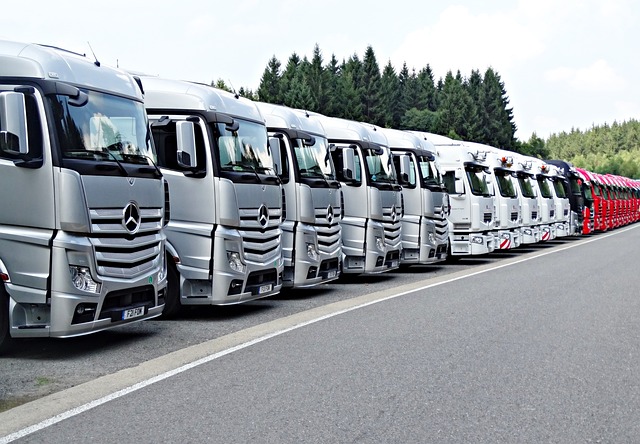Looking to register your car in California? This comprehensive guide walks you through every step, from understanding crucial requirements to securing your California registration plate. First, grasp the state’s vehicle registration mandates, then assemble essential documents, including proof of ownership and insurance. Next, learn the significance of performing a Vehicle Identification Number (VIN) verification, a vital process ensuring authenticity. Finally, submit your application and fees, either in person or online, and welcome to the Golden State’s roads!
- Understand California Vehicle Registration Requirements
- Gather Necessary Documents for Car Registration
- Perform VIN Verification: Steps and Importance
- Submit Application and Fees to DMV in Person or Online
- Receive Your California Registration Plate and Documents
Understand California Vehicle Registration Requirements

Before registering your car in California, it’s crucial to understand the state’s specific requirements for vehicle registration. One key aspect is ensuring the Vehicle Identification Number (VIN) is verified accurately. This process confirms the vehicle’s identity and history, which is essential for safety and legal compliance. In California, a VIN verification is typically conducted through an approved mobile vin verifier or by visiting a designated inspection station.
For convenience, many residents opt for a mobile vin inspection service, allowing them to complete the verification process right from their location. This modern approach streamlines the registration procedure, making it more accessible and efficient. By adhering to these requirements, including prompt VIN verification, you’ll ensure a smooth car registration experience in California.
Gather Necessary Documents for Car Registration

Before you start the registration process, ensure you have all the required documents. The primary piece of documentation is the Vehicle Identification Number (VIN) verification. This step is crucial as it confirms the vehicle’s make, model, year, and other essential details. A mobile VIN verifier can be a convenient tool for this purpose, allowing you to complete the inspection promptly.
Additionally, gather important papers such as proof of ownership, which could be a purchase agreement or title certificate. You’ll also need your driver’s license or state-issued ID, and possibly registration fees, depending on your vehicle type and age. Some states may require additional documents, so it’s wise to check with the California DMV before beginning.
Perform VIN Verification: Steps and Importance

Before registering your car in California, it’s crucial to perform a Vehicle Identification Number (VIN) verification. This process involves checking the VIN’s authenticity and ensuring it matches the vehicle’s actual make, model, year, and other specifications. You can do this by using a mobile vin verifier or conducting a vin inspection yourself. Start by locating the VIN, typically found on the vehicle’s registration certificate, or check the driver’s side door post. Then, compare these details with official databases to verify their accuracy.
A valid VIN is essential for several reasons. It confirms that your car is not a stolen vehicle and helps in tracking its history, including ownership changes, accidents, and maintenance records. An accurate VIN also guarantees that you’re purchasing or registering the correct vehicle, preventing mix-ups and potential legal issues. Moreover, many mobile vin inspection services make this process convenient by allowing you to verify the VIN digitally, saving time and effort compared to traditional methods.
Submit Application and Fees to DMV in Person or Online

In California, registering a car involves submitting an Application for Title and Registration (form DV304) along with necessary fees to the Department of Motor Vehicles (DMV). You have two options: visit a DMV field office in person or complete the process online. If you choose to go in-person, ensure you bring your vehicle’s title, proof of insurance, and any other required documents. The staff will guide you through the process, which includes verifying your vehicle’s Vehicle Identification Number (VIN) to ensure it matches the information on file. A mobile VIN verifier can be a convenient option, allowing for quick and accurate VIN inspection right at your location.
Alternatively, California’s DMV offers an online registration service that simplifies the process. You’ll still need to provide similar documentation, including proof of ownership and insurance. Online submission requires you to enter your vehicle’s details and upload supporting documents. After verification, the DMV will process your application, and once approved, you can print or download your registration documents. Consider using a mobile VIN inspection service for added convenience during this digital process, ensuring that every step is error-free and efficient.
Receive Your California Registration Plate and Documents

After completing your vehicle’s registration application, you’ll need to receive your California registration plate and associated documents. This typically involves a trip to a California Department of Motor Vehicles (DMV) office or, in some cases, utilizing a mobile vin verifier for convenient services. A mobile vin inspection service can provide on-site verification of your vehicle’s identity using the unique 17-character Vehicle Identification Number (VIN). This process ensures accuracy and speeds up registration by confirming the vehicle’s make, model, year, and other critical details.
Once verified, you’ll be issued a registration certificate, which includes your assigned license plate number. It’s crucial to keep these documents secure as they are essential for legal operations like renewing your registration or transferring ownership in the future. Additionally, some services offer mobile vin verification, providing a quick and efficient way to complete the registration process from the comfort of your own home or on-site at a location convenient for you.
Registering a car in California involves understanding state requirements, gathering essential documents, and successfully completing a VIN verification process. By following these steps and ensuring all necessary paperwork is in order, you’ll be on your way to obtaining your California registration plate and driving legally on the state’s roads. Remember that accurate and timely completion of each step is crucial for a smooth registration experience.



